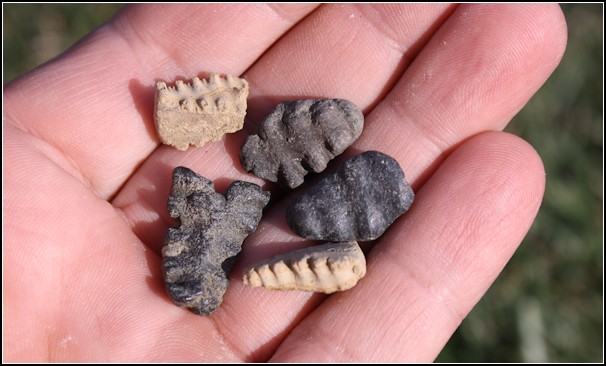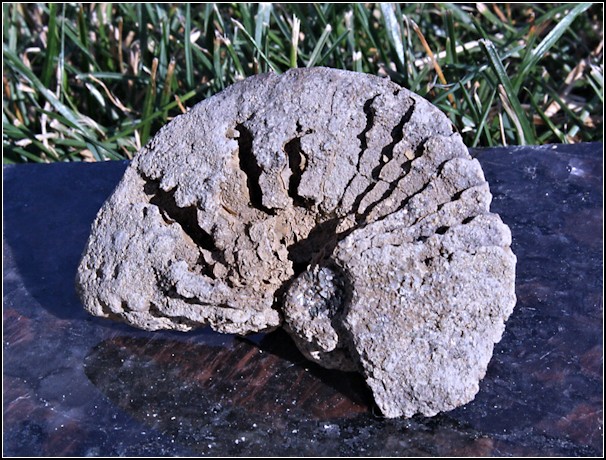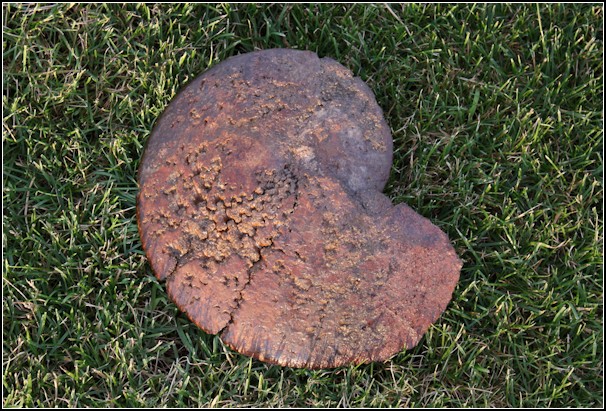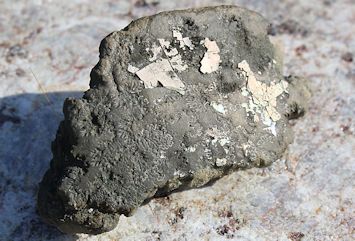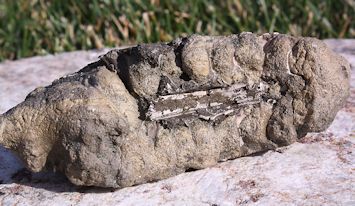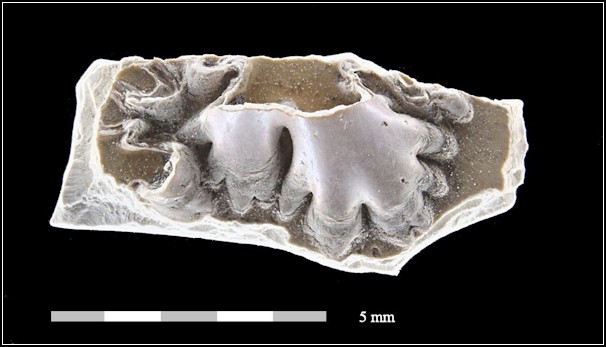|
Ammonite
Ammonites are an extinct group of
marine animals known worldwide for their chambered spiral shell.
This shell contained a series of progressively larger
chambers, these chambers are divided by thin walls called septa. The
last and largest chamber, the body chamber, was occupied by the living
animal, as it grew, it added newer and larger chambers to the open end
of the coil. A tube passed through the septa, extending from the
ammonite's body into the empty shell chambers enabling the ammonite to
control it's buoyancy by filling the empty chambers with air or water.
The most common ammonite fossil in New Jersey are the isolated chambers,
complete ammonites tend to be location specific and very fragile.
Fossilized ammonite chamber.
Placenticeras minor, measures 5 cm (2 inches)
Sphenodiscus lobatus, measures 21 cm (8 inches)
Placenticeras placenta with a bit of original shell.
Small fragment of original ammonite shell, This is a view is the inside
with the septa attached to
|
